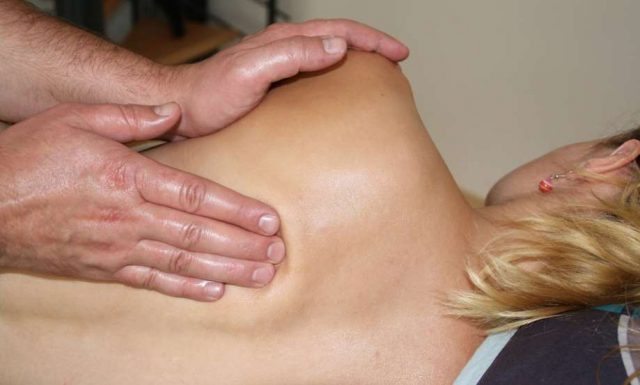Pelvic floor therapy is a physical therapy treatment approach that provides an effective, safe, and structured reconditioning of the pelvic floor muscles.
The goal of pelvic floor therapy NYC is to improve the pelvic floor muscle strength and function and thereby alleviating pain, weakness, and dysfunction in the pelvic floor muscles.
During treatments, a skilled physical therapist in pelvic floor therapy NYC clinics access the muscle through the rectum or vagina. They make manipulations on these muscles to improve strength and functioning as mentioned. The physical therapist may do two things, one is to stretch the muscles when found that they are short or contracted and the second is to apply resistance if they are weak and dysfunctional to improve strength.
When Pelvic Floor Therapy NYC is Recommended
Pelvic floor physical therapy is directed at the muscles, ligaments, and connective tissues of the pelvic floor. All of which anatomically work together to support pelvic organs and assist in bowel and bladder control. They also contribute to sexual arousal and orgasm. These tissues are joined to the pelvis, sacrum, and tailbone. They coordinate to provide support to the reproductive and urinary tract which includes the uterus and vagina for women, the prostate for men, the urinary bladder and urethra, and the rectum. These tissues provide stability in the pelvis and aid in the proper functioning of these pelvic organs. Functions like voiding functions, sexual functions, posture, and breathing are also affected by them. When pelvic muscles do not do perform these functions, symptoms such as pain can interfere with activities of daily living or ADL.
Pelvic floor therapy NYC and other orthopedic rehab procedures are found to help with conditions or disorders such as:
- Painful urination
- Urinary incontinence
- Urinary frequency
- Urinary urgency
- Bladder and bowel movements
- Fecal incontinence
- Pain in the genital area
- Painful intercourse
- Constipation
- Menopausal symptoms
- Endometriosis
- Vaginismus
- Lower back pain
- Pain in the pelvic area, hips, thigh, and abdomen
- Rectal pain
- Pregnancy-related pain
- Testicular pain
Who Undergoes the Pelvic Floor Therapy NYC
Pelvic floor therapy NYC is recommended as a first-line solution for several pelvic region dysfunctions. Weakness in pelvic floor muscles whether in men or women can be applied with pelvic floor therapy NYC modalities such as exercises to promote the strengthening of the pelvic floor and the enhancement of bladder and bowel control.
An attending physician may refer a patient to a pelvic floor therapy NYC clinic when pelvic floor disorders are suspected of having a neuromuscular origin. The pelvic dysfunction can also result from aging, childbirth, surgery, and other illnesses or conditions. It can also occur simultaneously with other genitourinary conditions like urinary incontinence, problems with bladder emptying, and fecal incontinence/constipation.
Some patients have been referred for pelvic floor therapy NYC procedures when showing symptoms such as chronic pelvic pain, painful intercourse, and bladder and bowel difficulties. Women often seek pelvic floor therapy NYC therapists for resolution of endometriosis or vaginismus while men for treatment of premature or painful ejaculation.
It can be noted that pelvic floor exercises benefit women with risks of vaginal prolapse and those recovering from childbirth. For men, pelvic floor therapy NYC helps to speed up recovery in men who have undergone prostate surgery, reduces risks of rectal prolapse, and greatly improves bladder and bowel control as well.
How Pelvic Floor Therapy NYC is Performed
A consultation with a pelvic floor therapy NYC clinic may begin with some history taking that includes the patient’s previous surgical and medical history, medications taken, and other sexual, OB-Gyn history.
A thorough orthopedic examination is then performed by the pelvic floor therapy NYC clinic paying close attention to the lumbar spine, hips, posture, and gait. This assessment typically involves the evaluation of internal and external muscles. The patient will be asked to stand, walk and sit for the pelvic floor therapy NYC therapist to identify any existing defect in posture or other issues surrounding the pelvic floor area.
This assessment and evaluation are crucial in determining appropriate and individualized care plan recommendations from the pelvic floor therapy NYC therapist. The type and modalities of therapy recommended largely depend on the patient’s experienced symptoms. Relaxing and exercises that lengthen pelvic floor muscles for example are endorsed for the relief of some symptoms but not in others where strengthening exercises are appropriate instead.
Pelvic floor therapy NYC clinic’s patient treatment care plan may include one or more of the following modalities:
- Stretching of the leg, trunk, or pelvic muscle
- Strengthening exercises
- Relaxation exercises to shorten pelvic muscles
- Coordination exercises
- Biofeedback for both of either relaxation or strengthening the pelvic floor muscles
- Modalities such as cold (ice), hot (heat), or electric stimulation
- Self-management and symptom prevention patient education
A thorough, personalized treatment care plan provided by the pelvic floor therapy NYC therapists can restore the strength and function of the pelvic floor muscles. Contracted muscles are stretched to relax to provide relief of pain associated with muscle tightening and cramps. Likewise, appropriate strengthening techniques alleviate contractions that crop us with an overactive bladder, help keep the pelvic organs like the bladder, rectum, and uterus in their position. The pelvic floor therapy NYC clinic’s ultimate goal is to ease patients’ pain and related symptoms and restore anatomical functions.
Pelvic Floor Therapy NYC Techniques Used
Most of the pelvic floor therapy techniques used to date are manual or hands-on and include internal as well as external treatments. A pelvic floor therapy NYC therapist though does not begin with internal therapy techniques as it does not appeal to some people and so wait for the patient’s readiness for this technique. External modalities on the other hand may include nerve release, deep tissue massages, trigger point treatment, joint mobilization, and skin rolling.
Pelvic floor therapy NYC performs internal techniques that entail the use of specialized instruments or passing a finger through the vagina or rectum to execute trigger point therapy. This therapy is performed by applying pressure on specific points. Anesthesia can also be injected by a doctor or nurse practitioner (not a physical therapist) into the trigger points. In some cases, physical therapy is not the only treatment recommended. Pelvic floor therapy NYC clinics may also recommend and provide other forms of treatment for pain like muscle relaxant medications or even Botox injections.
Some common techniques that pelvic floor therapy NYC use include:
- Patient education
- Pelvic floor exercise
- Manual therapy
- Pelvic floor biofeedback
- Electrical stimulation
- Vaginal dilators
Pelvic Floor Therapy NYC Modalities Work
Although pelvic floor therapies may appear to be unusual and invasive, they are quite effective. The success rate and improvement of the performance of ADLs and the overall quality of life of patients post-treatment are high.
Treatment of different dysfunctions entails varying numbers of sessions of pelvic floor therapy NYC. For example, treating myofascial pelvic pain may require at least 6-8 1-hour sessions for a few weeks and make the stretch to several months for severe cases.
Patients of pelvic floor therapy NYC clinics may also need to return for periodic check-ups.

Speaks from heart, always too passionate and driven by emotions. Spins the words with kindness & sharpness, intriguing your ever-inscrutable minds.




